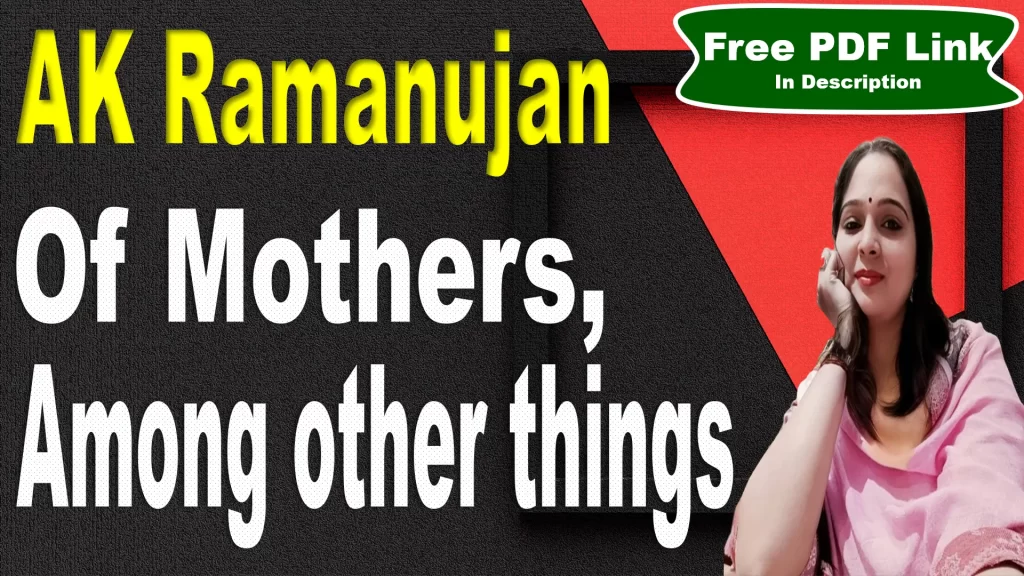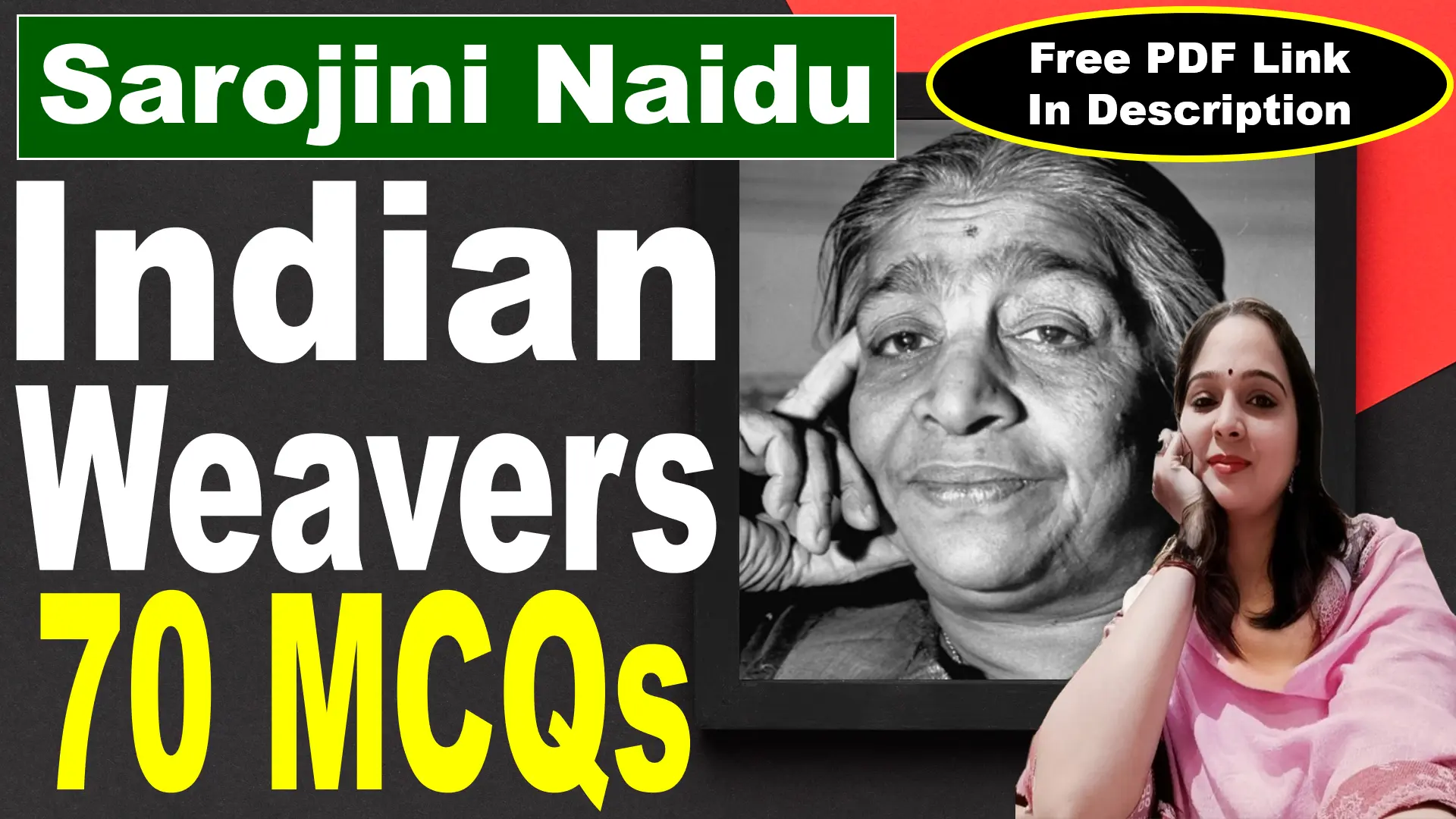
Of Mothers, among other things
I smell upon this twisted
blackbone tree the silk and white
petal of my mother’s youth.
From her ear-rings three diamonds
splash a handful of needles,
and I see my mother run back
from rain to the crying cradles.
The rains tack and sew
with broken thread the rags
of the tree-tasselled light.
But her hands are a wet eagle’s
two black pink-crinkled feet,
one talon crippled in a garden-
trap set for a mouse. Her sarees
do not cling: they hang, loose
feather of a onetime wing.
My cold parchment tongue licks bark
in the mouth when I see her four
still sensible fingers slowly flex
to pick a grain of rice from the kitchen floor.
Of Mothers, among other things: Video Explanation
Of Mothers, among other things Summary
“Of Mothers, among Other Things” by A.K. Ramanujan was written as part of his poetry collection The Striders, which was first published in 1966. This collection marked Ramanujan’s debut as a poet and established him as a significant voice in Indian English literature. The poem reflects his characteristic themes, such as personal memory, family relationships, cultural identity, and the passage of time, blending Indian and Western literary sensibilities.
In this poem, the poet reflects on his mother’s life, contrasting her vibrant youth with her current frailty. He uses vivid imagery and nature to describe her transformation over time. The “twisted blackbone tree” symbolizes her aging body, while the “silk and white petal” represents her beauty and energy in her younger days.
The poet recalls her as a young mother, busy and full of life. The sparkling “three diamonds” in her earrings remind him of her running back home in the rain to care for her children. The rain and light represent the passage of time, stitching together memories that feel fragile, like “broken thread.”
As the poet observes his mother in her old age, he notices her physical struggles. He describes her hands as “wet eagle’s feet,” a powerful image of both strength and damage. One talon, or finger, is injured, symbolizing the toll of years of hard work and life’s challenges. Her sarees no longer cling to her, but hang loosely, like feathers of a bird that once soared high but now rests.
The poet focuses on a small, touching moment: his mother bending down to pick a single grain of rice from the kitchen floor. Her fingers, though aged, remain careful and determined. This simple act reflects her enduring resilience and care, despite her declining physical strength.
The poem beautifully captures the bittersweet emotions of seeing a loved one grow old. It highlights the poet’s love, respect, and deep sadness as he remembers his mother’s vitality and witnesses her current frailty. It is a poignant tribute to a mother’s strength, sacrifice, and the inevitable passage of time.





